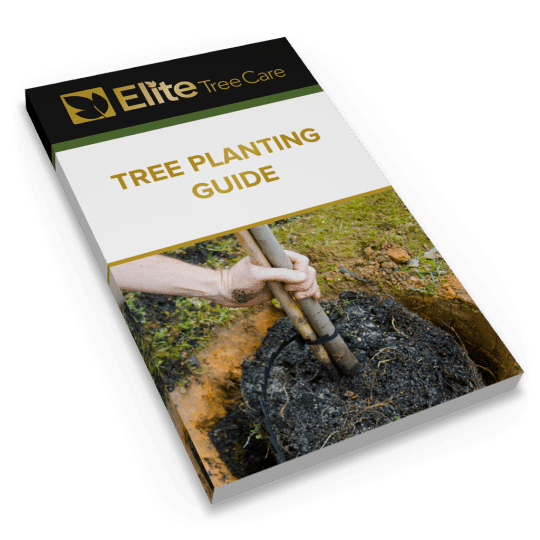What You Should Know About Tree Care
And What You Should Do About It
Posted
May 5, 2022

There are so many benefits to having trees on your property. From the beauty and shade to the increase in home value, a tree is a blessing, but also requires regular attention. Here’s what you should know about tree care and helping to keep your tree healthy and thriving.
Basic Tree Care
Like any living thing, a tree has basic survival needs: food, water, space, and air. While trees in the forest seem to get along just fine without human attention, a tree in your yard is different. It’s like a domesticated animal, it now relies on you for certain resources.
A tree absorbs what it needs through its leaves and roots, so these are the areas to focus on during tree care. You can tell a lot about how a tree is feeling by paying attention to leaf color and root placement. You also need to be aware of a tree’s surroundings. It needs space to grow, establish its complex root system, and expand its branches. This is something to consider even before you purchase a new tree.
Choosing the Right Tree
The first thing you should know about tree care is what type of tree will thrive on your property. Tree type and placement are two important factors in its future growth. Does the environment you live in suit the tree? Is there a specific spot it can grow and not have to compete for space with other trees, buildings, or utility lines? Can you maintain the leaves that will shed and/or the fruit and flowers that will grow? After considering these factors, you should have a better idea of what type of tree you want and where to plant it.
Observing Your Tree
After you’ve planted a tree, one of the key parts of maintenance is observation. Become familiar with the shape and color of the leaves. Take note of any flaking or discoloration in the bark. Examine the shape of the tree and the position of the branches. Knowing what your tree looks like when it’s healthy will help you determine if it may be dealing with disease or pests when any differences arise.
Diagnosing Tree Issues
If you notice something off with your tree, including early leaf drop, stunted growth, or discoloration of the leaves or bark, you can research solutions and contact an arborist to confirm what issues you may be dealing with. An expert examination will not only help diagnose the right issue but could also lead to the most efficient solution.
Regular Tree Care
Trees don’t need a lot from you. Other than a little planning to make sure the right tree is in the right place, a tree can work to establish itself where it’s planted. However, there are some things you can do to help make this process easier.
- Watering. Help a new tree quickly establish its roots with deep, infrequent waterings.
- Mulching. A few inches of organic mulch helps retain water and nutrients.
- Pruning. Remove any dead or diseased branches that could become hazards.
- Inspecting. Keep an eye out for signs of disease and decay. No matter when you plant your tree, the dormant season is a better time to reshape if necessary.
Remember, even though trees don’t need a lot from you to grow, you can help do your part by making sure they have room to thrive. Even thinking about where you park your car, how much foot traffic runs across your lawn, and where you set up your gardens can all affect a tree’s roots and space.
Contact Elite Tree Care for more information on the proper way to care for your tree, and what you can do—or not do—to help it thrive.

Download Your FREE Tree Planting Guide
Planting a tree is a cinch, as long as you are properly prepared. Get prepped to plant one tree or 100 with our straightforward guide.